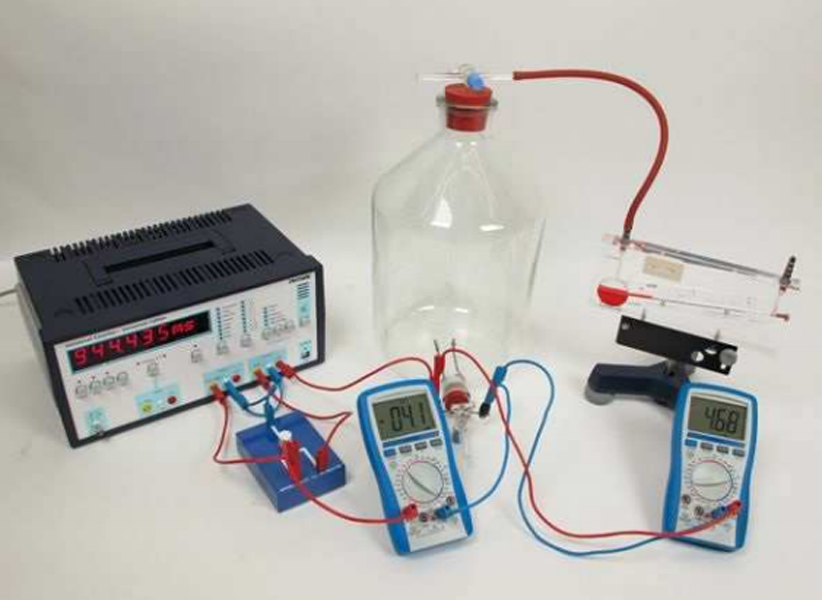Heat capacity of gases

Principle
Heat is added to a gas in a glass vessel by an electric heater which is switched on briefly. The temperature increase results in a pressure increase, which is measured with a manometer. Under isobaric conditions a temperature increase results in a volume dilatation, which can be read from a gas syringe. The molar heat capacities Cv and Cp are calculated from the pressure or volume change.
Benefits
- Determination of cp and cv
- For both demonstration and student experiments
- Suitable for many different gases
PHYWE Universal Counter
Stopcock,1-way,straight, glass
Stopcock,3-way,t-sh.,capil.,glass
Rubber stopper 26/32, 3 holes 7 mm + 2 x 1,5 mm
Rub.stop.d=59.5/50.5mm, 1 hole
Rubber tubing, i.d. 6 mm
Silicone tubing, inner diameter 3 mm
Nickel electrode,d 3mm,w.socket
Tubing adaptor, ID 3-5/6-10 mm
Scissors,straight,blunt,l 140mm
Weather monitor, 6 lines LCD
Tripod base PHYWE
Syringe 10ml, Luer, 10 pcs
Mariotte flask, 10 l
Precision manometer
Two-way switch, single pole
Chrome-nickel wire, d.0,1mm,100m
Digital multimeter 2005
Connecting cord, 32 A, 100 mm, blue
Connecting cord, 32 A, 250 mm, red
Connecting cord, 32 A, 250 mm, blue
Connecting cord, 32 A, 500 mm, red
Connecting cord, 32 A, 500 mm, blue
Tasks
Determine the molar heat capacities of air at constant volume Cv and at constant pressure Cp.
What you can learn about
- Equation of state for ideal gases
- First law of thermodynamics
- Universal gas constant
- Degree of freedom
- Mole volumes
- Isobars
- Isotherms
- Isochors and adiabatic changes of state
